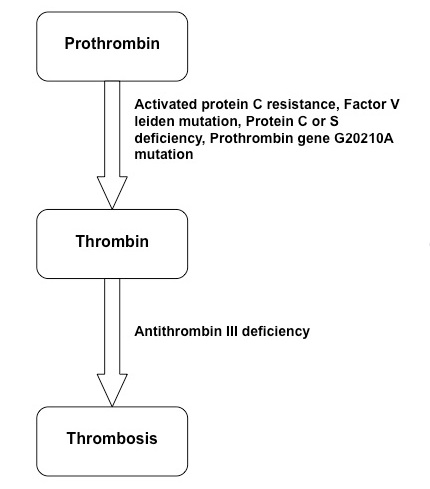Thrombophilia pathophysiology
|
Thrombophilia Microchapters |
|
Diagnosis |
|---|
|
Treatment |
|
Case Studies |
|
Thrombophilia pathophysiology On the Web |
|
American Roentgen Ray Society Images of Thrombophilia pathophysiology |
|
Risk calculators and risk factors for Thrombophilia pathophysiology |
Editor-In-Chief: C. Michael Gibson, M.S., M.D. [1]
Overview
Pathophysiology
The Virchow's triad has been described classically as the patho-physiologic mechanism responsible for any thrombosis, which includes 3 components:
The mechanism of thrombophilia involves affecting the pathway of thrombosis[1]:
Adapted from: N Engl J Med. 2001 Apr 19;344(16):1222-31.
